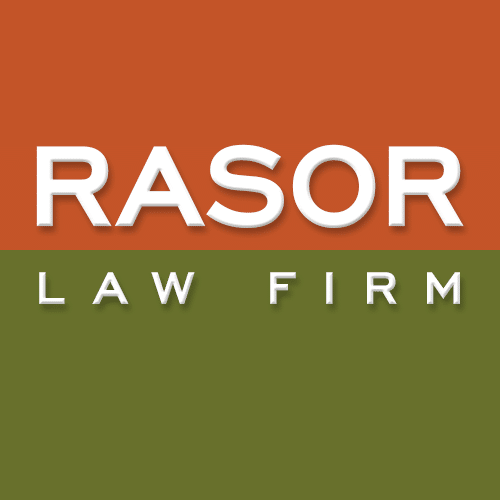Navigating the complexities of toxic infiltration cases requires detailed knowledge of real estate and environmental laws. Residents and property owners in Detroit facing these challenges need clear, reliable guidance to protect their rights and interests. This guide offers an overview of legal considerations and available support when dealing with toxic infiltration issues in the region.
When toxic substances infiltrate a property, the consequences can be severe, impacting health, property value, and community safety. Understanding the legal framework surrounding these incidents is essential for affected individuals to seek appropriate remedies. This resource provides insight into the processes involved in addressing toxic infiltration through legal channels in Detroit.
Addressing toxic infiltration promptly is vital to prevent further damage and secure compensation or remediation. Legal intervention can help clarify liability, facilitate negotiations with responsible parties, and ensure compliance with environmental standards. Utilizing these services can lead to safer living environments and protect property investments from long-term harm.
Located in Royal Oak, Michigan, Rasor Law Firm dedicates itself to assisting clients with a broad spectrum of legal concerns, including toxic infiltration issues. The firm’s approach emphasizes thorough case analysis and client-focused solutions. Their work in real estate law supports individuals and businesses in navigating complex legal matters related to environmental hazards and property disputes.
Legal support in toxic infiltration cases involves identifying responsible parties, assessing damages, and guiding clients through legal procedures to address contamination or exposure risks. This service includes reviewing environmental reports, negotiating settlements, and, if necessary, representing clients in court to secure favorable outcomes. Clients benefit from legal guidance that clarifies their rights and options when confronting toxic infiltration.
The legal process can be complex and time-sensitive, making professional assistance critical to efficiently resolving these situations while seeking remediation or compensation. Understanding the steps involved in investigating contamination and pursuing claims ensures better outcomes for affected property owners and residents in Detroit.
Toxic infiltration refers to the unwanted entry of hazardous substances such as chemicals, pollutants, or other contaminants into properties. This infiltration can occur through air, water, or soil, posing health risks and property damage. Understanding the sources and pathways of toxic infiltration is essential in developing legal strategies to address and mitigate its impact.
Managing toxic infiltration cases involves investigation, evidence collection, legal evaluation, and communication with environmental agencies or responsible parties. The process often requires collaboration with environmental consultants and adherence to regulatory requirements to ensure proper remediation and legal compliance.
Familiarity with legal and environmental terminology is important when dealing with toxic infiltration. Below are definitions of terms commonly encountered in these cases to help clients understand the legal language and processes involved.
The penetration of hazardous substances into land, buildings, or water supplies, causing potential harm to health and property. It is a central issue in environmental and real estate law.
Legal responsibility for damages caused by toxic infiltration. Determining liability is a key step in holding parties accountable and obtaining compensation.
The process of cleaning up or mitigating contamination to restore safe conditions. Legal actions often seek to ensure responsible parties carry out or fund remediation efforts.
Adherence to laws and regulations designed to protect the environment, which can impact how toxic infiltration cases are managed and resolved.
Property owners facing toxic infiltration can consider various legal approaches, from negotiation and settlement to litigation. Each option has different implications regarding cost, duration, and outcomes. Understanding these paths helps clients make informed decisions tailored to their specific circumstances.
In cases where contamination is limited and the responsible party is evident, a targeted negotiation or demand for remediation may resolve the issue efficiently without extensive legal proceedings.
When those responsible for toxic infiltration show readiness to address the problem promptly, legal efforts can focus on facilitating agreements to ensure swift remediation and compensation.
Toxic infiltration incidents involving several parties or complicated liability issues often require thorough legal action to establish accountability and secure appropriate remedies.
When the infiltration causes extensive harm, pursuing comprehensive legal options ensures that all damages are addressed and future risks are minimized through enforceable agreements or court rulings.
A comprehensive legal approach provides a detailed assessment of the situation, ensuring all aspects of the toxic infiltration are addressed. It helps in securing full compensation and enforcing cleanup responsibilities effectively.
This approach also offers protection against future liabilities and helps clients understand their rights and obligations, promoting long-term property safety and value preservation.
Engaging in a full legal strategy ensures all responsible parties are held accountable, leading to comprehensive remediation efforts and fair compensation for damages sustained.
Clients receive detailed support in navigating environmental regulations, legal documentation, and negotiations, which can be critical to achieving successful outcomes in toxic infiltration matters.


Keep detailed records including photographs, environmental reports, and communication with involved parties. This documentation is essential in establishing the extent of contamination and supporting your legal claims.
Familiarize yourself with local and state regulations related to toxic substances and property contamination. Knowing these laws helps in recognizing your rights and obligations during the legal process.
Legal support should be considered when toxic substances have affected your property, especially if there is uncertainty about responsibility or if damages are significant. Addressing these issues legally can help secure compensation and enforce cleanup.
Additionally, if you face health concerns or property devaluation due to contamination, obtaining legal guidance can provide options to protect your interests and pursue remediation.
Common scenarios include chemical spills from nearby industrial sites, groundwater contamination, exposure to hazardous materials during construction, and infiltration from previous land use. Each situation requires tailored legal approaches to address the unique challenges presented.
Properties located near manufacturing or processing plants may experience infiltration of harmful chemicals, necessitating legal action to address health risks and property damage.
Toxic substances entering water supplies can affect large areas and require coordinated legal efforts to hold responsible parties accountable and ensure safe water access.
Improper disposal of toxic waste on or near properties can lead to infiltration problems, demanding legal intervention to manage cleanup and liability.

We focus on clear communication and practical solutions, helping clients navigate the complexities of environmental and real estate law related to toxic infiltration.
Our commitment to client advocacy ensures that your rights are protected and that you receive guidance tailored to achieve the best possible outcomes.
We begin with a comprehensive case review, gathering all relevant information and environmental data. Next, we develop a strategic plan tailored to your needs, whether that involves negotiation, filing claims, or pursuing litigation. Throughout, we keep you informed and involved at every step.
Our first step is to assess the situation carefully by reviewing property details, contamination reports, and any existing communications with responsible parties or authorities.
We collect all pertinent documents such as environmental assessments, property records, and prior legal filings to understand the full scope of the issue.
Where necessary, we collaborate with environmental consultants to clarify contamination levels and potential remedies, supporting a well-informed legal strategy.
Based on gathered information, we outline possible legal approaches and discuss with clients to determine the best path forward, balancing efficiency and thoroughness.
We seek to resolve matters amicably through negotiation where possible, aiming for remediation agreements or compensation without protracted litigation.
If negotiations fail or are unsuitable, we prepare to initiate legal proceedings to assert your rights and pursue appropriate remedies through the courts.
After reaching an agreement or court decision, we assist with enforcing terms, monitoring remediation efforts, and addressing any ongoing concerns to ensure long-term protection.
We oversee compliance with settlements or court orders, helping clients address any breaches or delays in remediation work.
Our firm remains available for advice and assistance beyond case resolution, supporting clients in maintaining safe and compliant property conditions.

Toxic infiltration refers to the intrusion of hazardous substances into properties, which can lead to health risks and property damage. It is a significant concern because contaminants can degrade living conditions and reduce property value. Early identification and legal intervention are important to address these risks effectively. Property owners should monitor signs of contamination and seek professional advice to understand the extent of the issue and their rights. Indicators of toxic infiltration may include unusual odors, discoloration of water or soil, health symptoms among residents, or environmental testing results showing contamination. If you notice any such signs, it is important to conduct thorough environmental assessments. Consulting with professionals and legal advisors can help determine the presence of toxic substances and guide appropriate next steps to protect your property and health.
Legal options range from informal negotiations with responsible parties to formal litigation. Often, the first step is to seek remediation agreements that ensure cleanup and compensation. If these efforts fail, filing a lawsuit may be necessary to enforce rights and obtain damages. The appropriate course depends on the case’s complexity and the willingness of parties to cooperate. The duration of toxic infiltration cases varies widely based on factors such as case complexity, number of parties involved, and legal processes required. Some cases may resolve within months through negotiation, while others involving litigation can take years. Prompt action and thorough preparation can help expedite the process. Throughout, maintaining open communication with your legal team helps manage expectations and progress smoothly.
Compensation may be available for property damage, health impacts, and associated costs resulting from toxic infiltration. The amount and type of compensation depend on evidence of harm and legal liability. Achieving fair compensation often involves negotiation or court rulings. Legal representation can assist in documenting damages and advocating for your interests to maximize recovery. If you suspect toxic infiltration, begin by documenting any unusual conditions and seeking environmental testing to confirm contamination. Early consultation with a legal professional can help protect your rights and guide appropriate actions. Addressing the issue promptly can prevent further damage and improve outcomes in remediation and compensation efforts.
Rasor Law Firm handles toxic infiltration cases involving both residential and commercial properties. Each case is approached with attention to its unique circumstances, ensuring tailored legal strategies that address specific contamination issues and property types. Our firm is equipped to assist a broad range of clients affected by environmental hazards. Michigan has environmental laws and regulations that govern toxic substances and property contamination. These laws influence how toxic infiltration claims are managed, including cleanup standards and liability rules. Understanding these regulations is essential for pursuing legal remedies effectively. Our firm stays informed about local laws to provide accurate guidance.
We prioritize clear and consistent communication with clients throughout the legal process. Clients receive regular updates on case developments and have opportunities to ask questions and provide input. This approach ensures transparency and collaboration, helping clients stay informed and confident in their representation. Costs involved in toxic infiltration cases vary depending on the scope of legal services, case complexity, and duration. Our firm discusses fees openly with clients and strives to provide cost-effective solutions. Some cases may qualify for contingency fee arrangements, which can reduce upfront expenses. Understanding potential costs helps clients plan and make informed decisions.
%%FAQ6_ANSWER_2_PARAGRAPHS%%
%%FAQ7_ANSWER_2_PARAGRAPHS%%
%%FAQ8_ANSWER_2_PARAGRAPHS%%
%%FAQ9_ANSWER_2_PARAGRAPHS%%
%%FAQ10_ANSWER_2_PARAGRAPHS%%